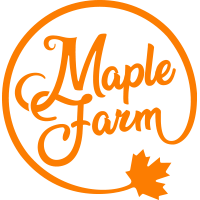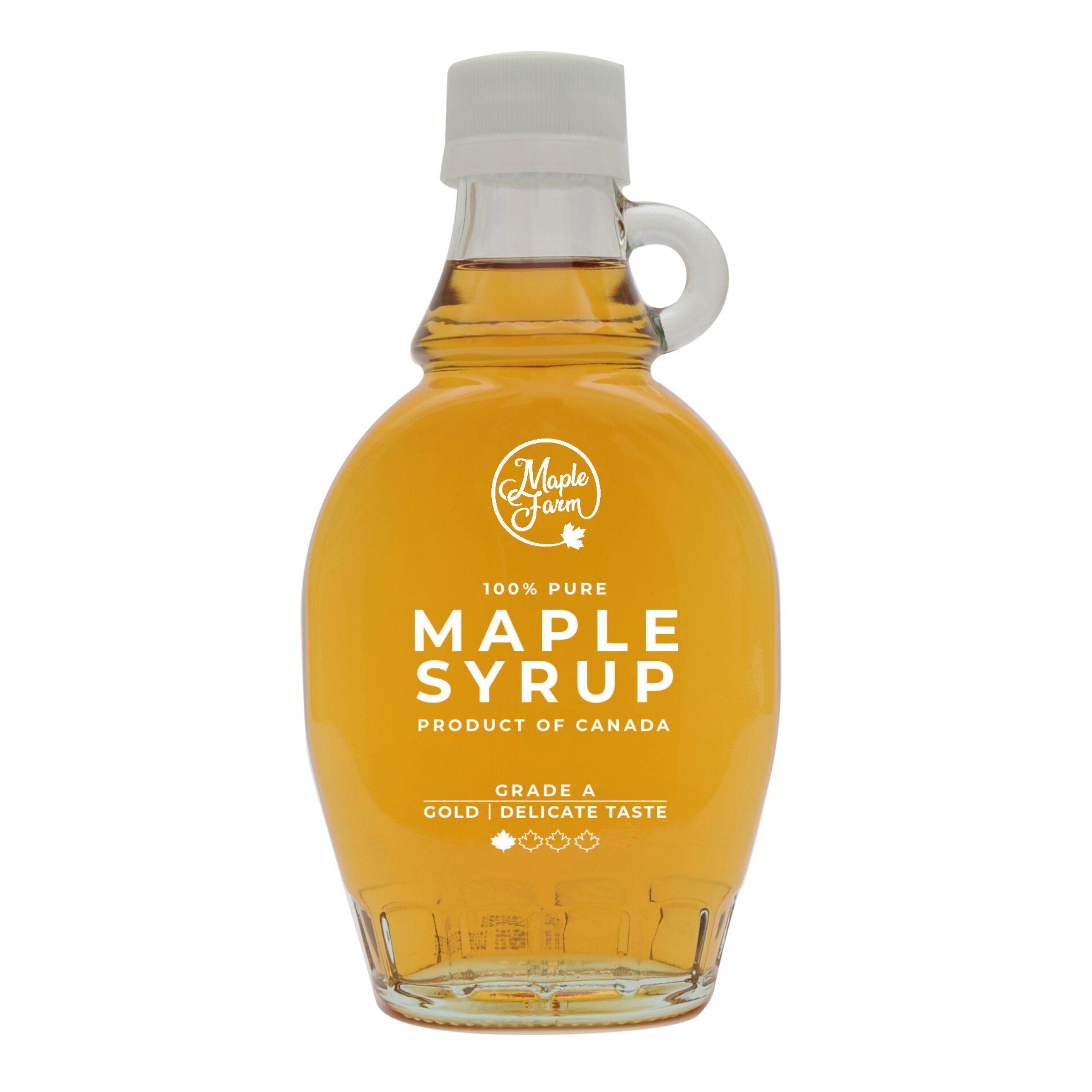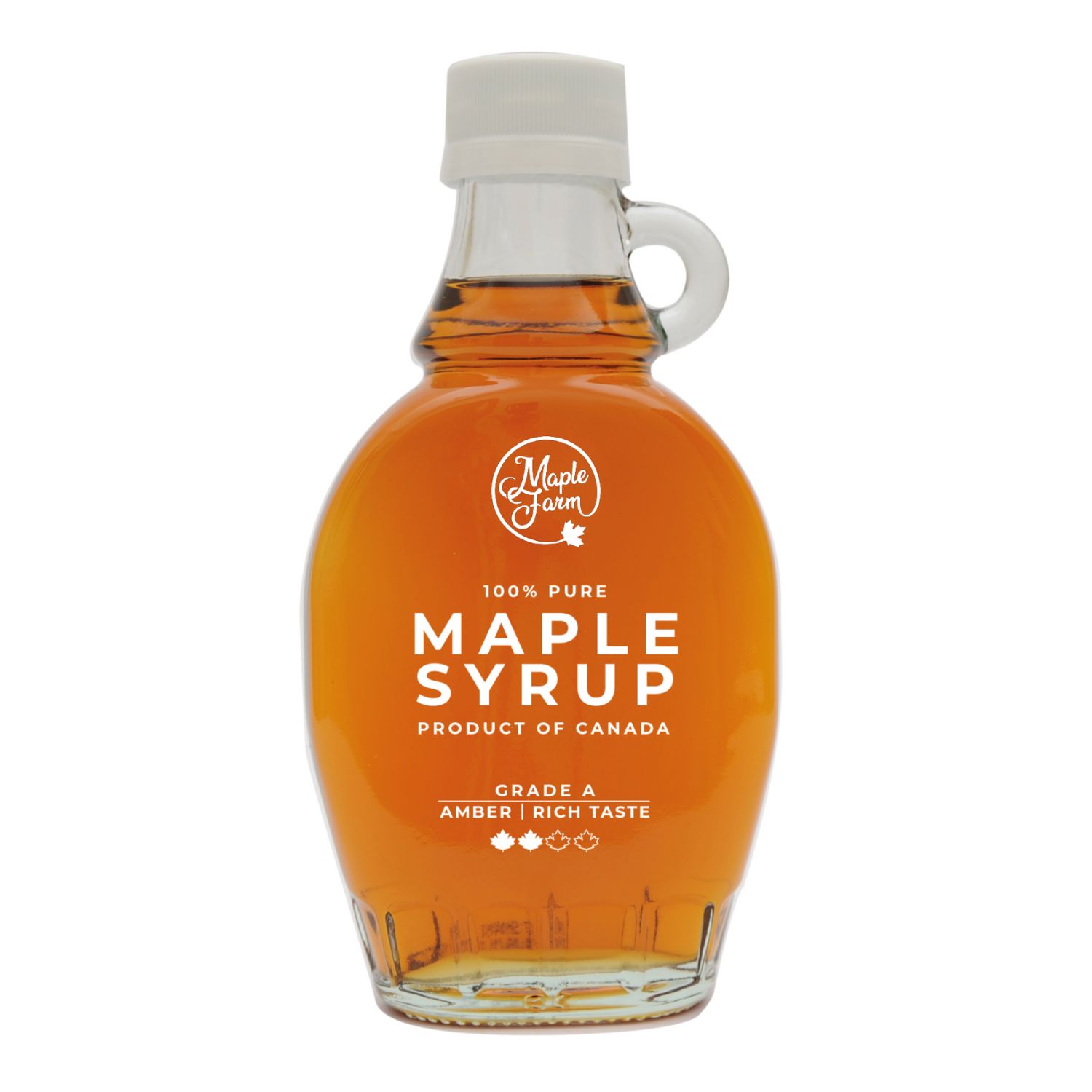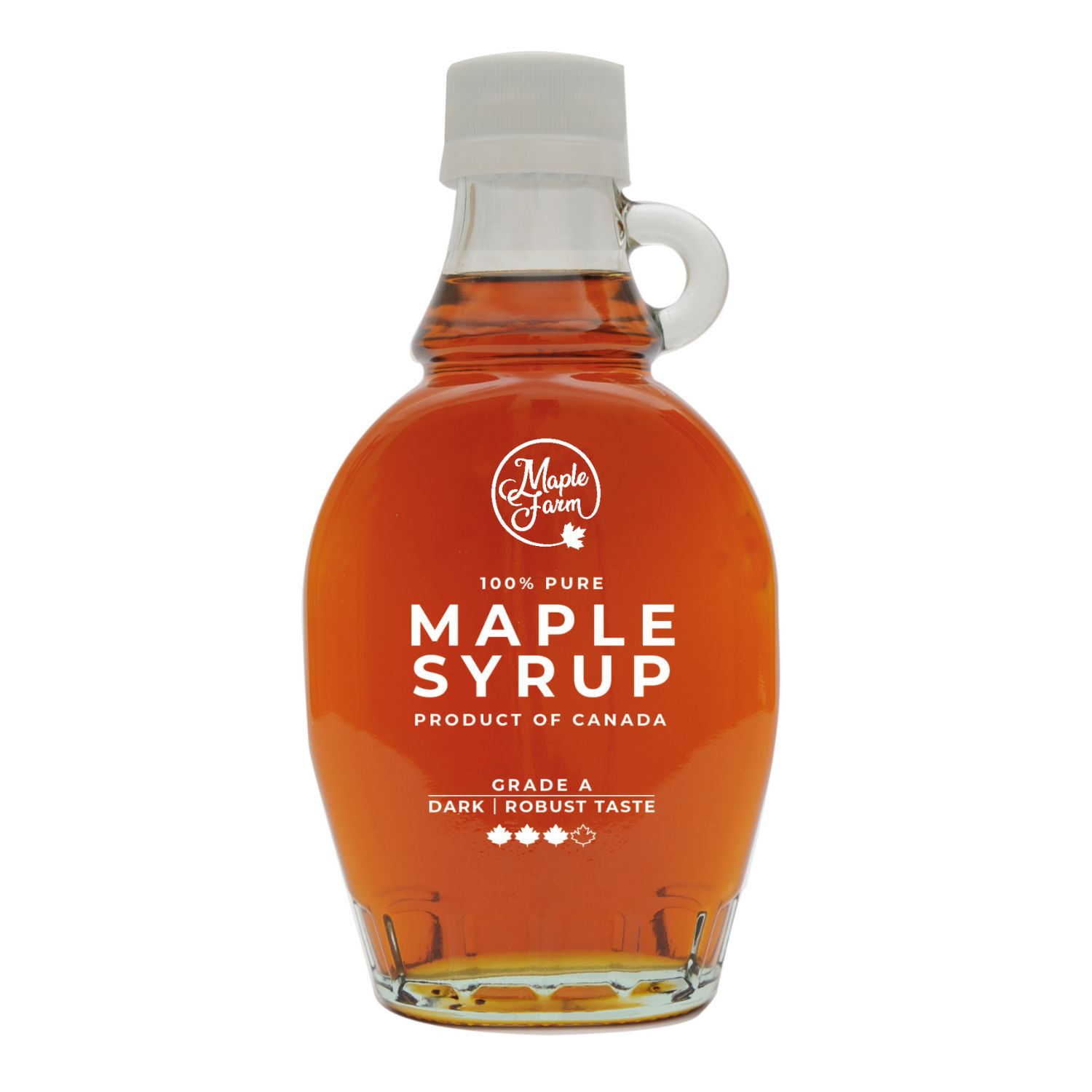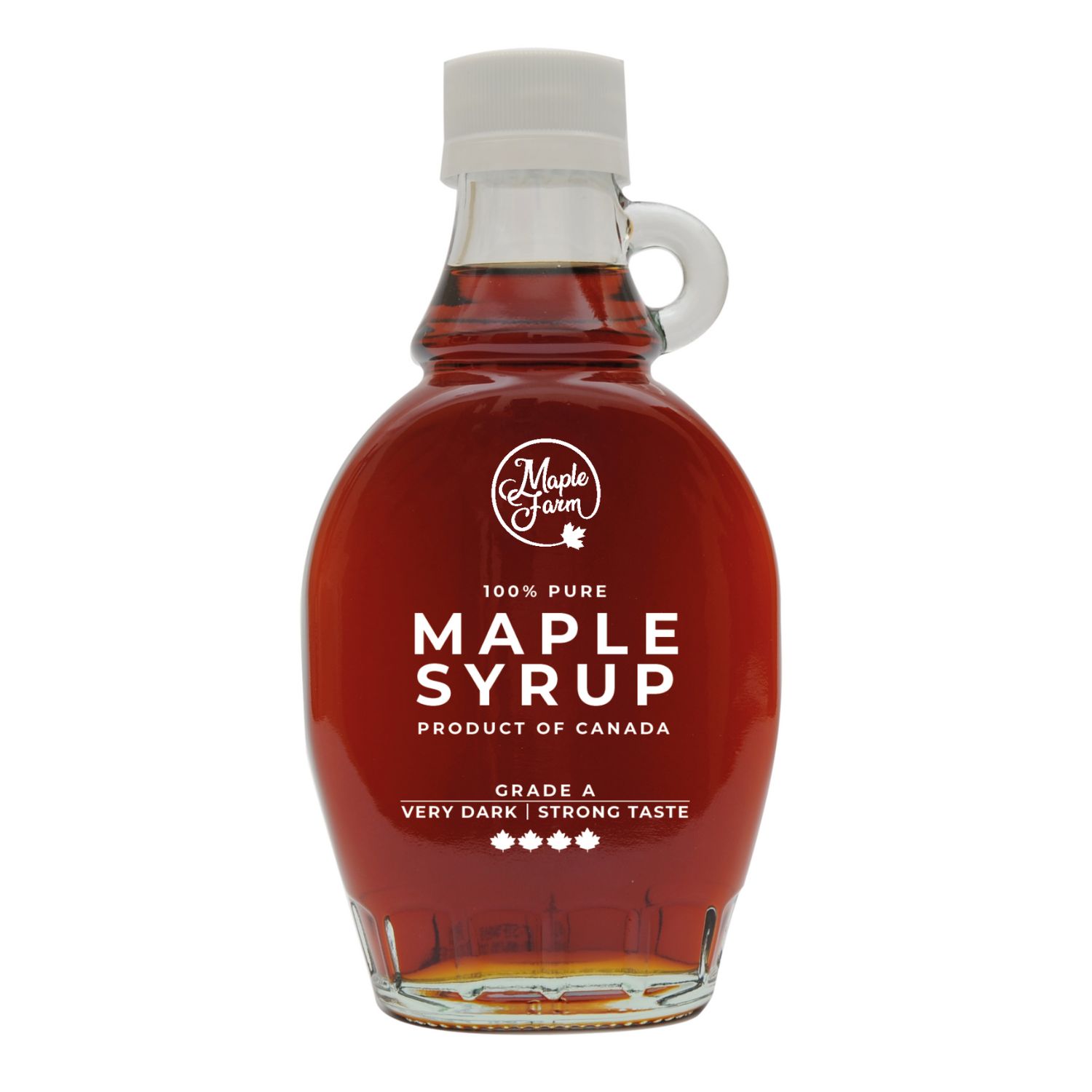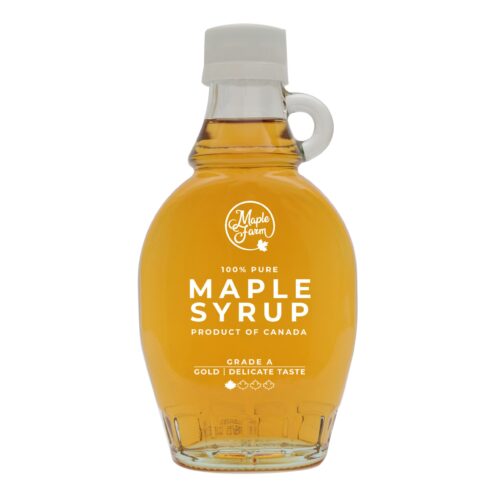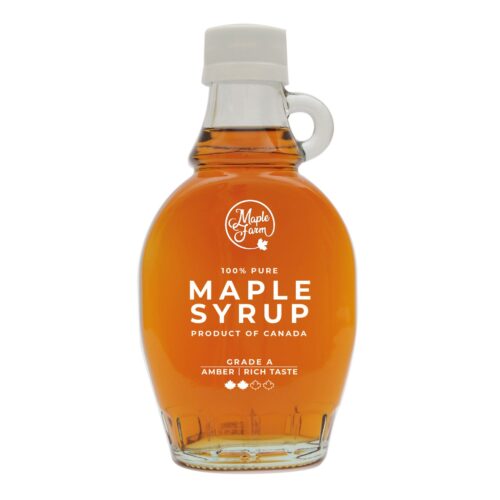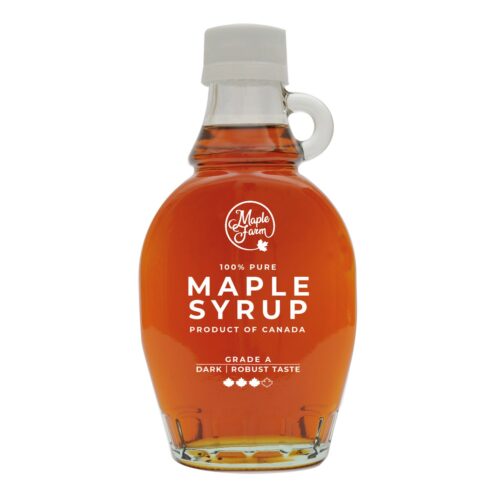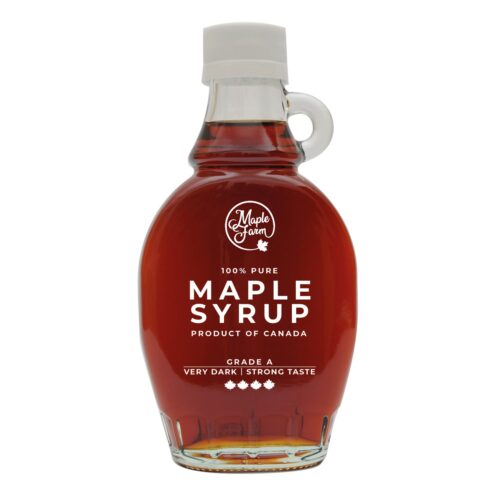
Maple syrup is classified according to strict Canadian regulations into two grades and four color varieties.
Prior to 2016, maple syrup was classified using the letters A, B, C, and the numbers Nr.1 Extra light, Nr.1 Light, Nr.1 Medium, Nr.3 Dark.
Since January 1, 2016, Canada introduced a new classification system: it is divided into Grade A or Processing Grade, based on quality parameters, and four different color intensities: Gold, Amber, Dark, and Very Dark. Grades B and C no longer exist.
The four varieties of maple syrup are determined based on color and sensory characteristics.
The purity and sugar content are virtually the same in all four types of maple syrup.
Grade A maple syrup
According to the strict production regulations, only Grade A maple syrup can be sold at retail to end consumers.
Grade A maple syrup is defined as syrup obtained solely through the concentration process of maple sap and that meets the following requirements:
- It is free from unwanted fermentations.
- It has a clear and uniform color.
- It is free from sediments.
- It is not cloudy.
- It has a distinctive natural maple aroma specific to each of the four color varieties.
- It does not have non-characteristic odors or flavors
Processing Grade
Processing Grade maple syrup is also obtained through the concentration of maple sap, but it does not meet one or more of the quality parameters defined for Grade A. This grade can only be used for industrial production and cannot be sold in stores or to end consumers.
The four varieties of maple syrup
Grade A maple syrup is further differentiated into four varieties, each with a different color and flavor profile.
The definition of the variety is based on the transmittance value. Transmittance
is all about light, which is the ratio of the intensity of light passing through a sample to the intensity of the light that exits it.
A higher transmittance value corresponds to a lighter and more transparent maple syrup, while a lower value results in a darker and more opaque syrup. The different colors of maple syrup also have distinct tastes and varying densities.


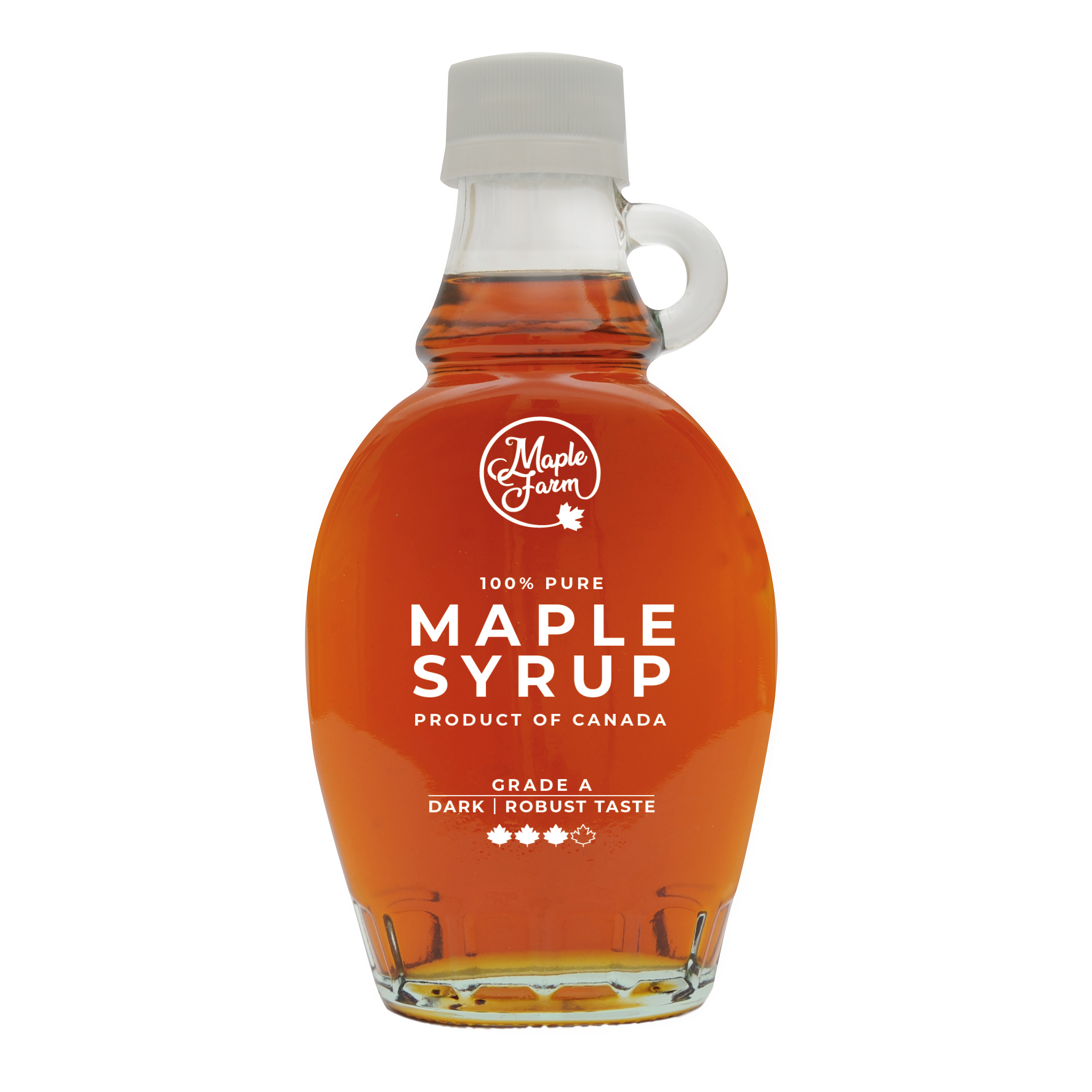
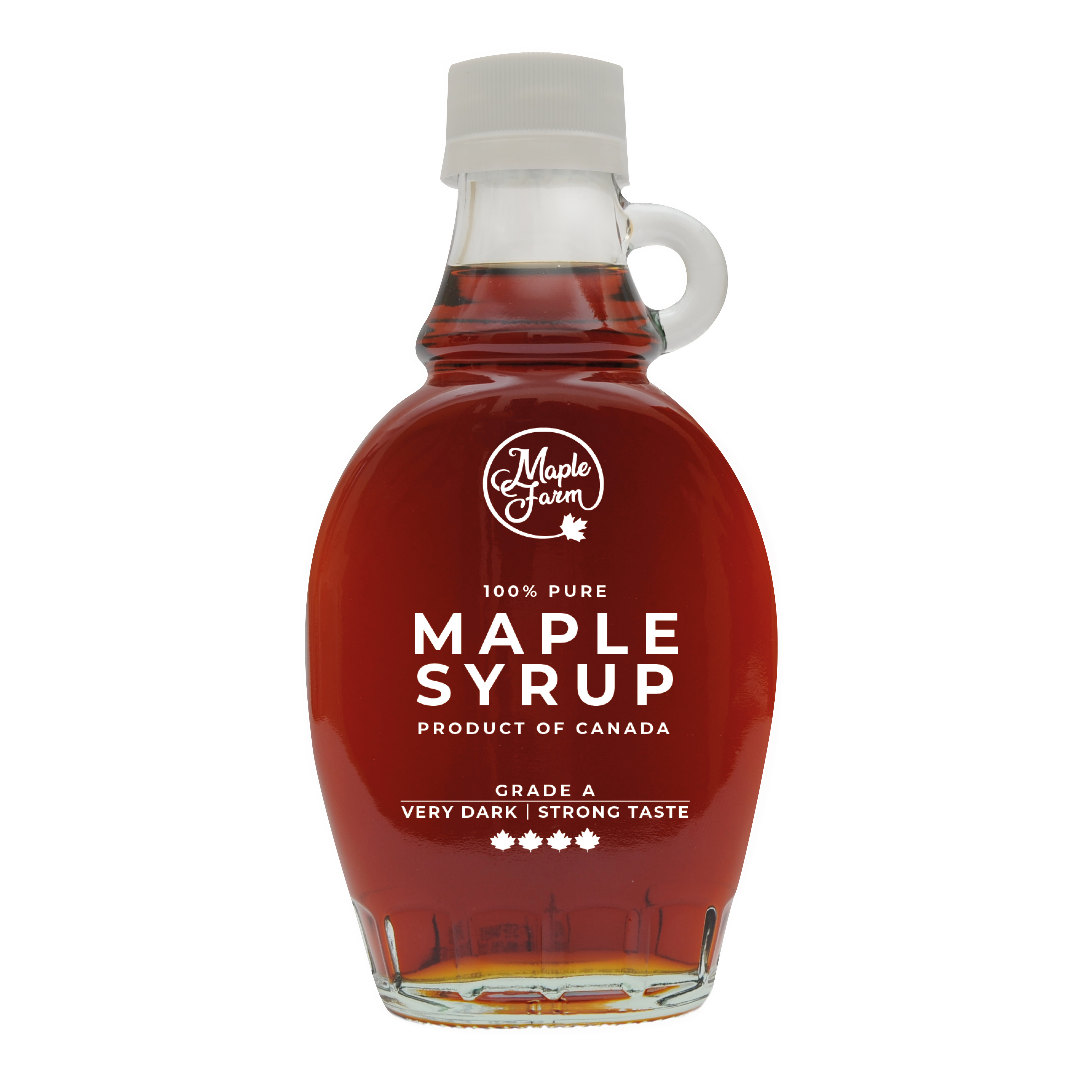
*Minimum transmittance values with tolerance +25%.
The aroma of maple syrup is reminiscent of tree resin, with a fresh and earthy scent that tends to take on a caramelized aftertaste once it undergoes its processing.
This wonderful natural sweetener offers a variety of different aromatic components, including flavors and aromas of hazelnut, vanilla, coffee, licorice, floral notes, and spices
It’s nature itself that characterizes the nuances of maple syrup: at the beginning of the harvesting season, a light syrup with a delicate flavor is obtained; as the season progresses, the produced syrup takes on a darker color with different aromatic characteristics.
Each color variety is distinguished by a designation accompanied by a flavor note:
- Gold, Delicate Taste
- Amber, Rich Taste
- Dark, Robust Taste – robust taste
- Very Dark, Strong Taste– strong taste
Thanks to this classification, it’s possible to choose the maple syrup that best suits one’s preferences and recipes.
Here are the four different varieties in detail, the best pairings and how to use them in recipes.
Gold color
Delicate taste
Here are the four different varieties in detail, the best pairings, and how to use them in recipes.
It has a golden color, a milder flavor, and lower density. It’s the most prized variety, as it can be produced in smaller quantities compared to other types of maple syrup.
To fully enjoy its light and refined taste, we recommend using it pure, as a honey substitute, on bread, toast, or in beverages.
It also enhances the flavor of savory ingredients, worth trying with mild cheeses or in salad dressings.
Get inspired by our recipes and pairing suggestions.
PHYSICAL CHARACTERISTICS

Amber color
Rich taste
The second variety produced during the sugaring season, in the month of March. It has an amber color, low density and rich, aromatic flavor with hints of brown sugar and hazelnut.
Thanks to its fruity notes, it is the idelae companion for a wide variety of breakfasts.
It goes well with yogurt, fresh fruit, in cocktail preparation, as well as on classic pancakes orwaffles.
Also often used for glazing in cooking foods, such as fish. A Canadian culinary classic is maple-glazed salmon.
PHYSICAL CHARACTERISTICS

Dark color
Robust taste
The third variety of maple syrup is produced from sap collected during the month of April.
Dark amber color, average density and bold flavor with hints of hazelnut and caramel.
It’s the most versatile and appreciated variety, an excellent ingredient in both sweet and savory preparations.
Ideal in recipes with fruit or to sweeten coffee, we suggest trying it for glazing meat or vegetables or in the preparation of BBQ sauce.
Get inspired by our recipes.
PHYSICAL CHARACTERISTICS

Very Dark color
Strong taste
The last variety produced at the end of the maple sap harvesting season, in late April.
It has a dark color, thicker consistency, and concentrated flavor with a caramel and licorice aftertaste.
It is the most suitable type for those who appreciate strong and lingering flavors, perfect as a molasses substitute.
Used in the preparation of desserts or drinks it releases its typical flavor, so much so that it is often used as an ingredient for preparationsin the confectionery industry.
Thanks to its intense flavor, it pairs very well to accompany aged cheeses.
For more cooking tips, discover our recipes.
PHYSICAL CHARACTERISTICS

Which maple syrup to choose?
The four varieties of maple syrup have different sensory characteristics that can cater to everyone’s tastes. The nutritional values of pure maple syrup do not change based on the type or color.
When buying maple syrup, the first and most important thing to do is to read the label carefully: real maple syrup is 100% pure, without the addition of sugars and preservatives, like MapleFarm maple syrup.
A single and only ingredient: maple syrup.
Visit our shop, choose the variety you like the most, and start your journey into a world of deliciousness right away!
